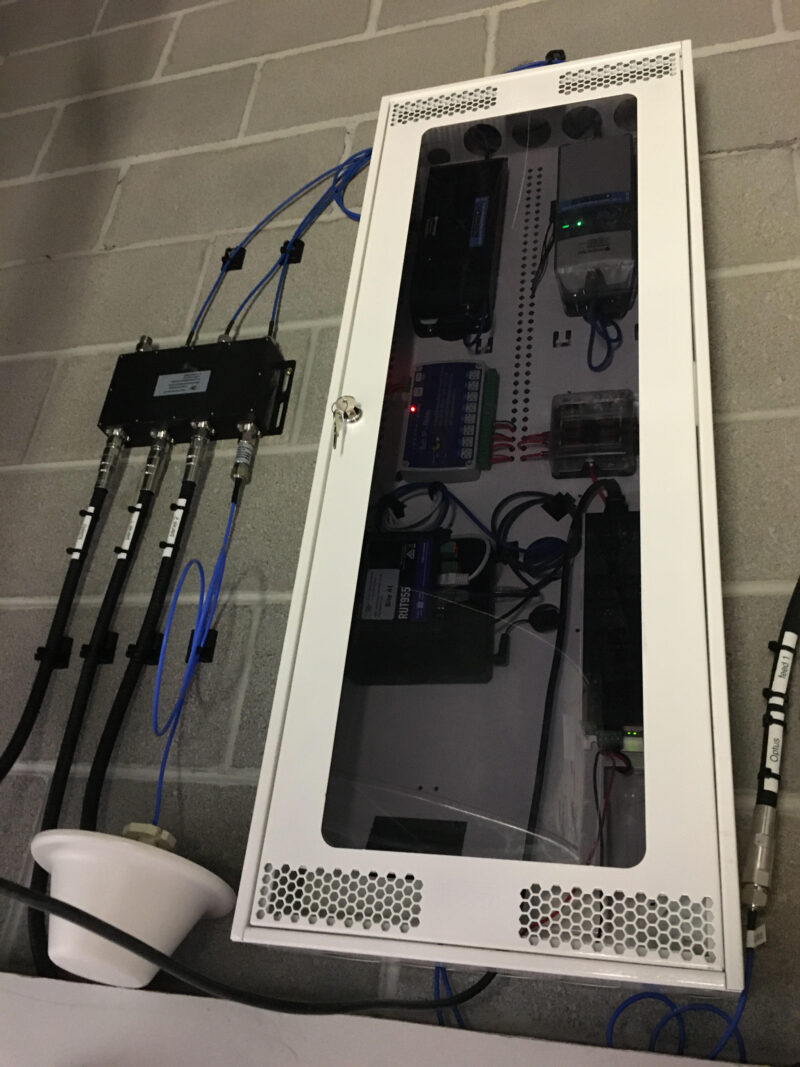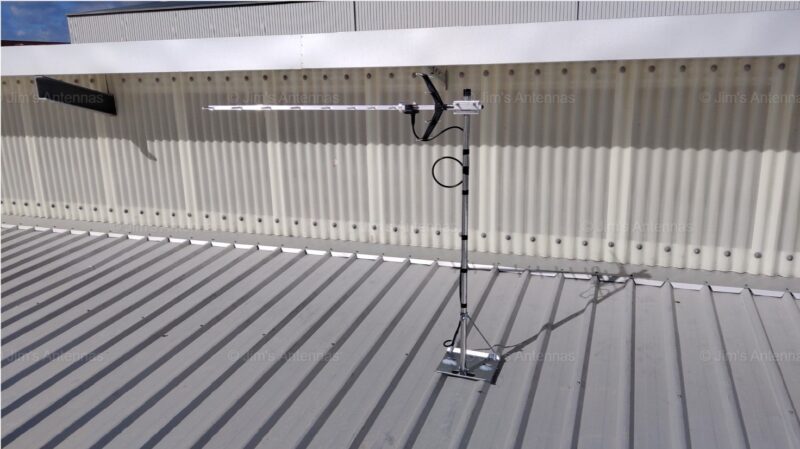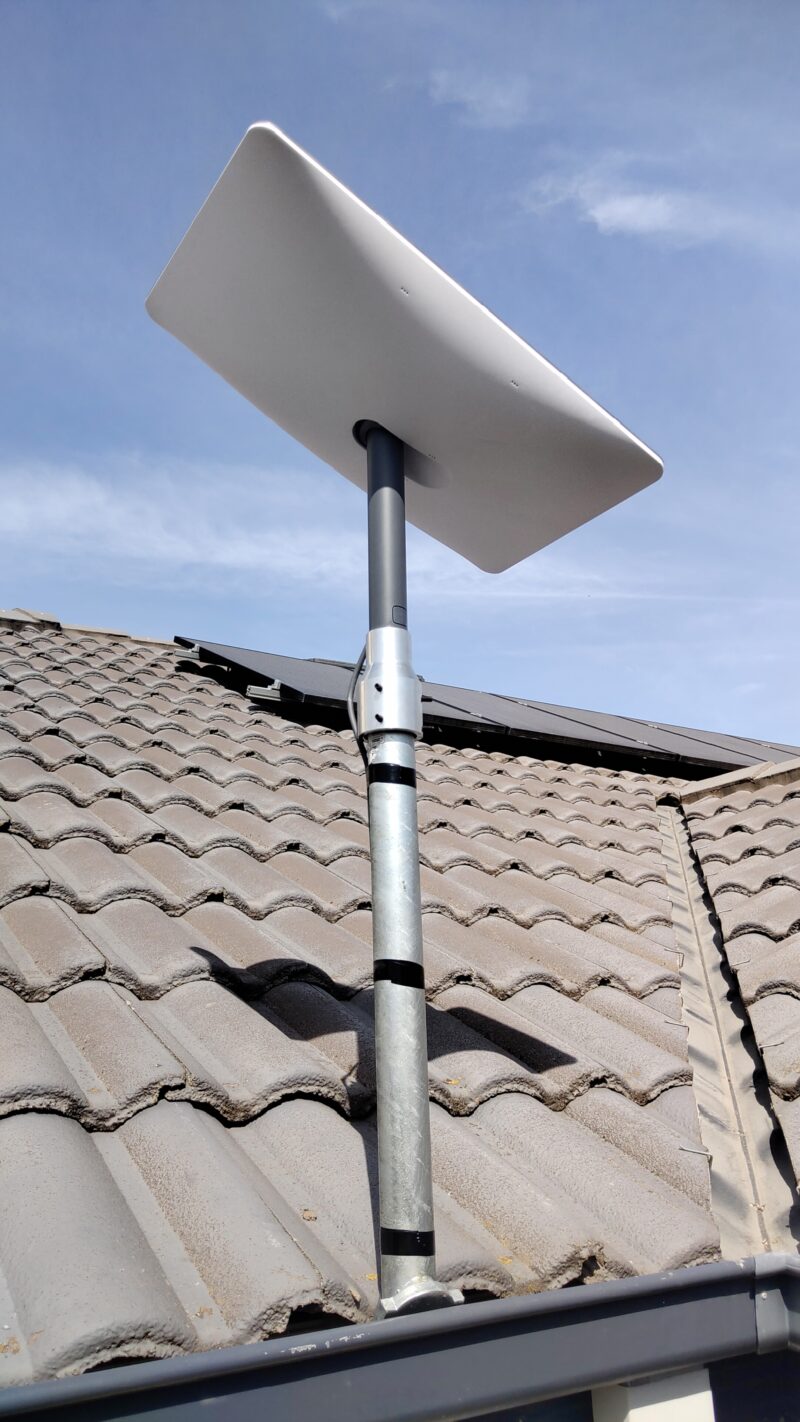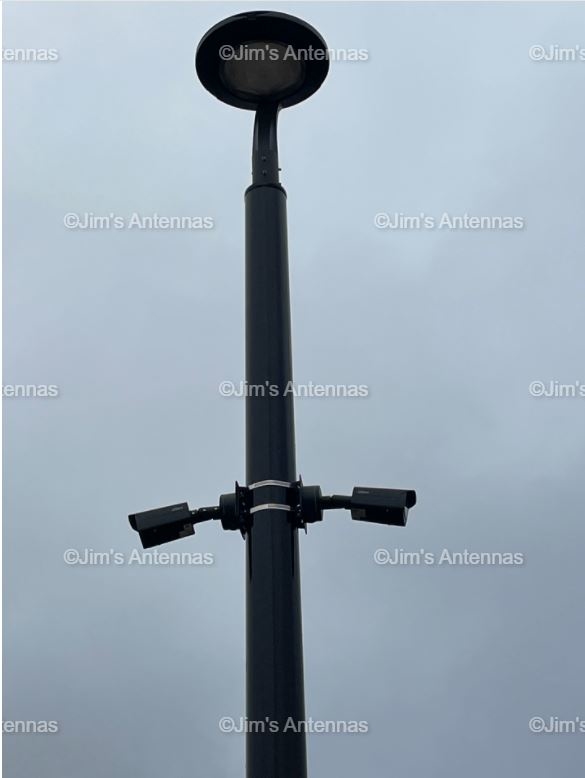A quick answer to this complicated question is that there isn’t one specific ‘antenna’ that is considered the ideal solution. The antenna which will give you the best results will depend on which transmission tower you are receiving your free-to-air TV signal from and the distance you are from that transmitter.
If you live in Hobart or the Greater Hobart region, keep on reading to find out more on which antenna is best for your area.
UHF or VHF?
In Australia free-to-air (FTA) TV is transmitted in two different bands: Very High Frequency commonly referred to as ‘VHF’ and Ultra High Frequency, known as ‘UHF’. VHF receives channels 6-12, while UHF receives channels 28-51.
As different bands receive different channels, the antennas required for these two bands are quite different. For example, as VHF is a lower frequency, a VHF antenna will have much longer cross bars and look a lot bigger than a UHF antenna.
In Hobart there are a number of different transmitters. Mt Wellington (ch 6-11) is a high powered VHF transmitter, which services the majority of Hobart and surrounding areas. However, there are also a number of much lower powered UHF transmitters for areas that are unable to receive a good signal from Mt Wellington. These include:
- Government Hill transmitter (ch 46-51)
- Acton transmitter (ch 34-39)
- Taroona transmitter (ch 40-45)
- New Norfolk transmitter (ch 34-39)
You may also have heard of combination antennas, which have both VHF and UHF transmitters. In the Hobart area, there is no need for this type of antenna. You will get a better resit from a dedicated VHF or UHF antenna.
If tossing up between the two, it is worth keeping in mind that VHF and UHF signals also behave quite differently. While a VHF signal is more prone to bouncing and will follow the terrain to some extent, UHF is a line of sight signal, meaning that it will travel in a straight line towards its target transmitter.
What is a ‘Good’ Signal?
When determining whether or not a TV signal is ‘good’ there are two things to consider: the first and most important factor is signal quality, then signal strength.
In the Hobart area people often receive a signal from more than one transmitter. For example, homes in the lower Sandy Bay area sometimes receive signals from up to four different transmitters! While this makes it difficult for DIY installers to determine which signal they choose, the team at Jim’s Antennas has specialised equipment which allows us to always pick the signal with the best quality.
That being said, low signal strength can always be corrected with a mast head amplifier. However, this is more of a bandaid solution. As Grant from Jim’s Antennas Kingborough puts it, if you have a small pile of rubbish (an antenna with poor signal strength) and you make it bigger (i.e. install an amplifier) it is still rubbish.
Picking the Best Antenna For Your Area
With the background information covered, we can finally get onto talking about how to find the best antenna for your area.
First of all can you see the Mt Wellington towers from your home?
If so you should be using a VHF antenna. This will make things easier as when you automatically tune a TV it will start tuning from Channel 6 and work up to Channel 69. When it finds a signal strong enough to lock on to, it will tune this in and then continue searching until it finds all five networks. Once a TV has found all five networks, in most cases it will ignore signals from other transmitters.
In short, as Mt Wellington uses Channels 6-11 your TV will tune these in and ignore all other signals (which could cause interference if received), allowing you to enjoy good picture quality.
If you are in an area with two or more transmitters, the best transmitter is not always the one with the lowest frequency – which means you may not be able to automatically tune your TV.
For example if you’re living in a spot within the Sandy Bay Area where Government Hill transmitter (Ch 46-51) is the best option for you (over the Mt Wellington transmitter), auto-tuning your TV may give you poor image quality and could pixilate your picture, as your TV will ignore the best signal from Government Hill and instead lock onto Mt Wellington (as it has a lower frequency).
This problem can be solved by a good installer who has a range of 4G block filters. The filter for the transmitter that you want can be fitted to block the unwanted transmissions for your location. Your TV will then only tune in the best signal.
Considering Signal Strength
Signal strength is also important, if it is too low you will experience pixilation or loss of signal and if it is too high it can cause pixilation or can burn out the TV’s tuner. Typically a good signal strength is between 60-65dBuv.
As mentioned earlier, Mt Wellington is a high strength transmitter. Grant from Jim’s Antennas Kingborough has measured strengths of up to to 95dBuv on a standard VHF antenna and has seen customers’ TV tuners burn out at 85dBuv. This is why it is important to be able measure signal strength and also be able to adjust the signal down to the correct level by using an attenuator.
As a professional and highly skilled installers, Grant and all other Jim’s Antennas franchisees carry a number of different amplifiers to increase signal strength. To achieve the best outcome possible Grant carries a range attenuators to reduce strong signals down to correct levels and at least five different types of antennas so that he has the correct antenna for any location.
What is the best TV antenna for free TV? Well there isn’t one specific antenna. It’s entirely dependent on which transmission tower you are receiving your free-to-air TV signal from and also the distance your home is from that transmitter.
If you are having issues with TV reception, or are looking at getting a new free-to-air Antenna installed, give your local Jim’s Antennas expert call on 131 546 or book a free onsite no obligation quote.



